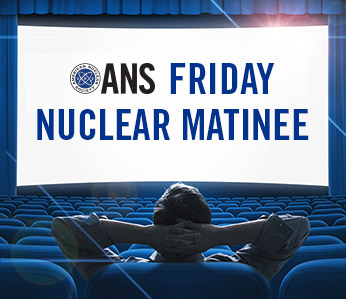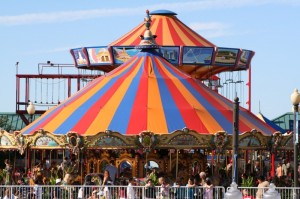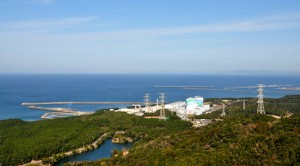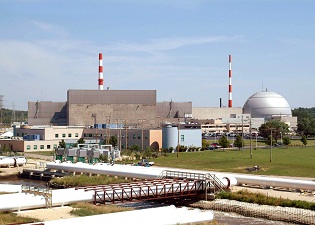Failing to Maintain the Big Picture
by J.H. Stewart Melville III

by J.H. Stewart Melville III
http://www.eenews.net/tv/videos/2134 Today's matinee: an OnPoint interview with pronuclear environmentalist Michael Shellenberger, as he discusses the benefits nuclear energy has on the economy and the environment.
On May 26, 2016 at precisely 2:16 a.m., what will probably be the final large unit in the Tennessee Valley Authority (TVA) nuclear fleet - Watts Bar Nuclear Plant, Unit 2 - achieved its initial criticality. This event opens the final chapter of the extended construction history of this unit, and paves way for another gigawatt of generating capacity (in nameplate rating) to be added to TVA's generating portfolio.

Our Friday Matinee for today is the latest of the excellent Vogtle Timeline videos produced by Georgia Power to document the construction progress of Vogtle Units 3 and 4. The series stands as one of the most thorough video documentations of nuclear plant construction ever filmed, and this latest update is every bit as informative as its predecessors.
This story was originally posted in What's New section of ANS.org.
In 1959, a small community in Ohio completed a lobbying effort to bring a modern marvel to town-a nuclear power plant. Piqua, a town of less than 20,000 people, took its place on the broader news map, and set its sights on the stars. The journey would stop short of the citizens' dreams.
Byline: the Nuclear Upended Team
Recently, the Nuclear Regulation Authority of Japan announced that Shikoku Electric Power Company's Ikata Unit 3 had cleared the new, three-step process required to restart nuclear plants in Japan. This latest announcement also came with the closely coupled announcement that Shikoku would permanently close and decommission another nuclear unit, more or less in trade.

This week's Friday Matinee features an update on the construction progress at Plant Vogtle's Units 3 and 4, the new AP1000 units being built in Georgia. This is the First Quarter 2016 update and runs less than ten minutes.
Will Davis recently wrote an article on the Cafe: Chernobyl Through the Mist of Decades with a look back, lessons learned, and life now. But today, April 26, marks the 30 year anniversary of the Chernobyl accident. We encourage everyone to take time to remember Chernobyl, and to review some of the promising information that has been written about the area now, as the world moves forward.
 The 306th edition of the Nuclear Energy Blog Carnival has posted at Neutron Bytes.
The 306th edition of the Nuclear Energy Blog Carnival has posted at Neutron Bytes.
Today's video is brought to us by Third Way, and takes a closer look at the energy sources, and why we need to add nuclear into the energy mix. Wind and solar are just not able to do it alone and needs nuclear to get the level of electricity we need without destroying our environment. "So, let's play it smart and develop a mix of low-carbon solutions, because we won't get a second chance to stop climate change." Today, #EarthDay (and everyday), let's remember to bring good things to our planet.

Sendai Nuclear Power Plant, courtesy Kyushu Electric Power Co.
Two significant earthquakes have struck Kumamoto Prefecture in Western Japan within a week, and the Japanese nuclear plant owners and their regulator (the Nuclear Regulation Authority, or NRA) have responded to some reignited fears over nuclear plants in this region by beginning to publish reports and data. The data show that at no point was any of the plants in danger.
 The 305th edition of the Nuclear Energy Blog Carnival has posted at The Hiroshima Syndrome.
The 305th edition of the Nuclear Energy Blog Carnival has posted at The Hiroshima Syndrome.

BONUS nuclear plant as it appears today (Photo courtesy US DOE)
Among the many different reactor concepts being investigated in the late 1950s and early 1960s was the idea that the steam produced by a boiling water reactor, which normally goes straight to the turbine building, could be superheated (or have further heat added once it was already steam) by nuclear energy. This would greatly increase the efficiency of the plant, as well as make dry steam at a high pressure that would allow the use of (less expensive) commercially available equipment in the steam plant. Two reactors were built to investigate the idea of performing both processes in essentially the same reactor-one in South Dakota and (perhaps incredibly to today's readers) another of a very different design on the island of Puerto Rico.

Our Friday Matinee this week looks at China's Shidao Bay nuclear plant. This plant, widely touted as a Gen-IV design, is a bit unusual in that it employs two HTGR's (that's High Temperature Gas cooled Reactors) supplying steam to one turbine generator. The video gives a good basic look at the plant's design and shows the steady progress being made toward fully operable, commercial HTGR's.

Courtesy SSE ChNPP.
In the administration building of the Chernobyl nuclear power plant, a number of stained glass windows (as seen to the right) recall the optimistic tone of industrial Soviet-era art that can still be viewed today at power plants around the former USSR. That these are well preserved is not the result of a specific effort, but instead because of the essential abandonment of large parts of the facility, and even the entire region, after the most serious nuclear reactor accident in 1986 in history.

Dresden Nuclear Generating Station (Photo courtesy Exelon Nuclear)
August 2012 was hot in Chicago. It was one of those times, while the American Nuclear Society was assembled there for its annual meeting, when the air was so hot and laden with humidity that it palpably hit you when you walked outdoors. All air conditioners, everywhere, were running at their maximum just to keep the buildings in the city habitable.

Two videos are featured this week. The first is a short, brand new (released this morning) video from Georgia Power showing some of the progress at Vogtle Units 3 and 4, set to music.